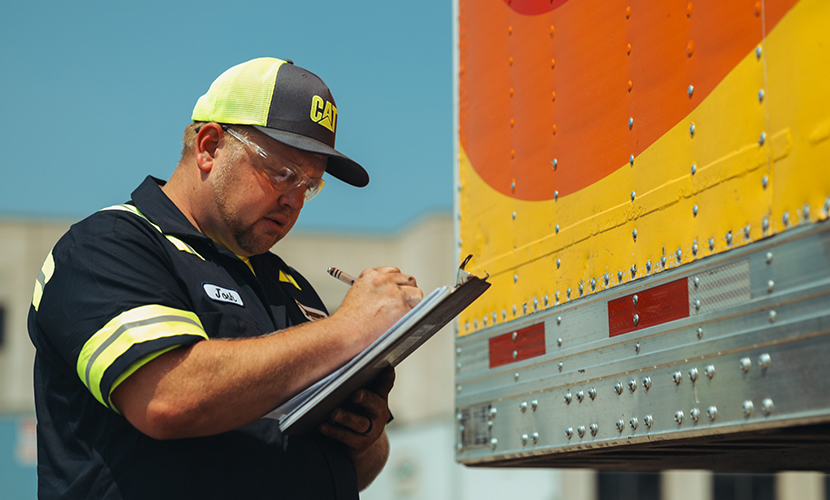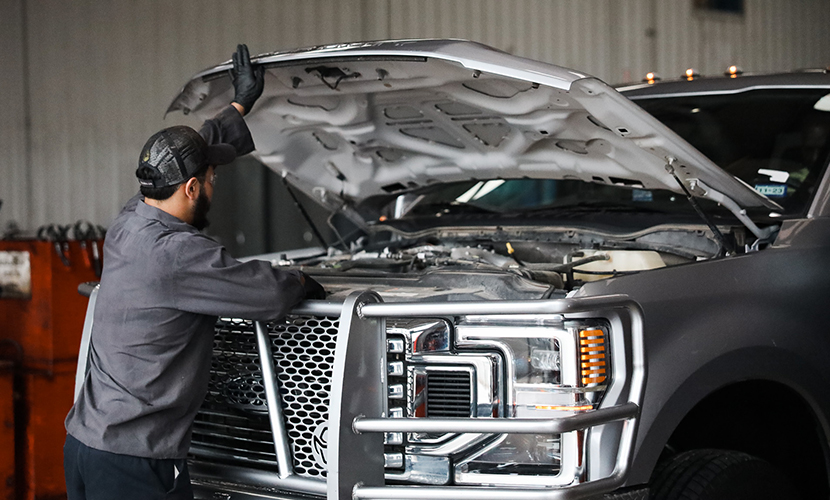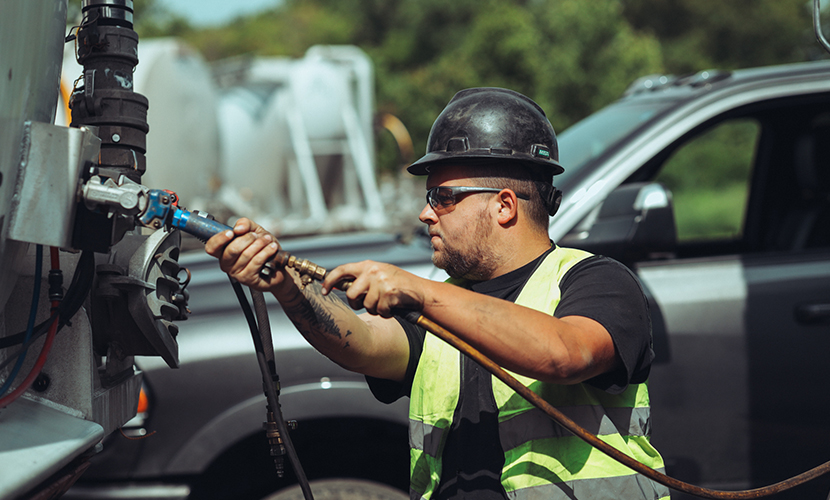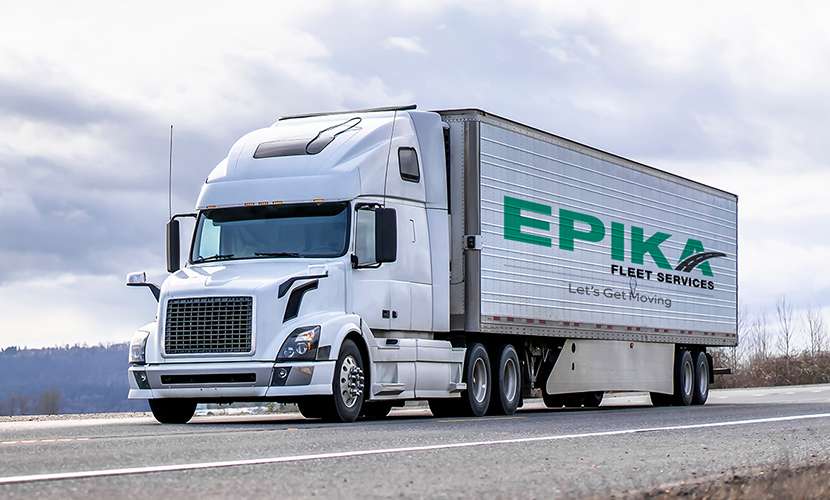Maximizing Fleet Efficiency with Telematics Technology
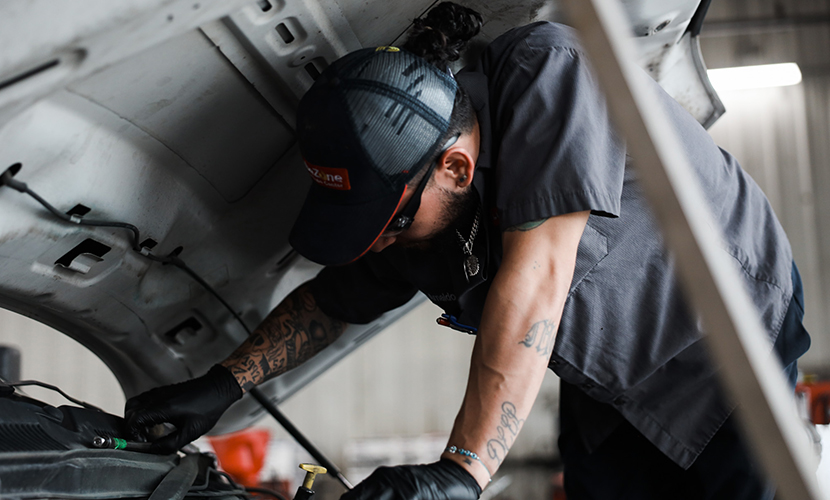
Telematics technology provides your company with one thing that can make all the difference in the world. It can be the difference between a profitable company and a floundering, failing business. It can make or break careers. What is it? Information.
Telematics technology is a powerful way to monitor, predict, guide, and optimize the performance of your fleet, whether you’re dealing with two or three vehicles or a fleet of hundreds. What is it specifically, though? How can you make use of it to improve the efficiency and performance of your fleet? Let’s talk about it.
What is Telematics?
Telematics is a word for an all-encompassing set of technologies that can provide you with accurate, useful, real-time information to help you make decisions. It’s a portmanteau, a word made up of two words mashed together: telemetry and informatics.
- Telemetry: The in situ collection of measurements or other data at remote points and their transmission to receiving equipment for monitoring.
- Informatics: The study, transformation, and use of information.
In other words, telematics is the gathering of specific information about your vehicles and the use of that information to guide the performance of those vehicles.
Modern fleet telematics devices use a combination of GPS location tracking, vehicle condition and diagnostic information, vehicle location and movement, and driver behavior to provide a robust, ongoing report on the state of a given vehicle in your fleet. That information, in aggregate, can allow a centralized platform (your fleet management software) to give you overall reports on your fleet. It can also be used at the vehicle or driver level to diagnose issues, schedule proactive maintenance, and optimize the efficiency, productivity, and performance of those vehicles and drivers.
What Information Does Telematics Gather?
Telematics technology works by installing a small device into a vehicle and linking it up to your fleet management platform. This device generally combines the features of a vehicle monitor, an ELD (electronic logging device), and a GPS tracker. Typically, the driver will also have access to some of the information provided by the telematics device and can add context, submit their own reports, issue corrections, and generally engage with the system. The sum reports are sent back to your home base, where they’re trackable individually and in aggregate across your fleet.
What information, specifically, is a telematics device likely to be tracking?
- GPS information. This includes precise location but also travel direction, speed, and route. Depending on the kind of GPS tracking, this may be real-time or on a delay. Geofencing can also specify a route and a buffer zone around that route and can flag any time a vehicle leaves this operating theater.
- Driver behavior. While you can’t necessarily track things like whether or not the driver responds to children asking for a honk, you can track things like rapid acceleration, deceleration, speed, hours of operation, and other behaviors that promote safe driving.
- Fuel monitoring. Tracking fuel usage and levels can identify problems with excess idling, excessive fuel consumption, and potential fuel leaks. By syncing it up with fuel payments, you can also monitor for fuel theft.
- Odometer tracking and mileage reporting. Keeping accurate mileage reports can help with scheduling proactive maintenance and other tasks for your vehicles.
- Vehicle condition and computer reports. Commercial vehicle computers track a variety of information about the condition of the vehicle, ranging from tire pressure to engine temperature to fluid levels, all of which can be used to proactively maintain a vehicle or diagnose potential issues before they become active problems.
- Specific trouble codes and malfunction indicator lights. While many of the telemetry data points aren’t necessarily reflected on the onboard computer and dashboard indicators for the driver, if any of those indicators are triggered, this, too, is reported.
Some of this information must be specifically configured to be tracked; others are tracked automatically. It also all depends on the specific devices you’re using. Some track more information, and some track less. Some also link up with additional technologies, like dashboard cameras, which can be automatically enabled to record incidents ranging from excessive braking to collisions to off-route driving.
All of this information is tracked at the individual vehicle level. However, when every vehicle in your fleet is being tracked the same way, you can develop aggregated reports about the condition of your vehicles and the state of your drivers. This allows you to do things like optimize route planning and assign the closest vehicles to the closest tasks.
What Are the Benefits of Telematics Technology for Fleet Managers?
It’s one thing to know, in the abstract, what information you’re gathering. It’s another to know what that information means and how to use it. So, what are the benefits of gathering all of the above information, reading reports on vehicles and drivers, and knowing the overall state of your fleet?
Reduced fuel costs. Many different elements of a driver’s daily life can use excess fuel, and telematics information can help cut back on that excess fuel usage. For example:
- Telematics can find more efficient routes that burn less fuel to reach a destination.
- Telematics can identify cases of excess engine idling, identify the causes, and help you avoid them.
- Telematics can identify potential problems or inefficiencies with the vehicles to help you schedule more proactive maintenance and boost fuel efficiency.
- Telematics can flag unauthorized equipment usage.
Since fuel costs are one of the largest expenses associated with operating a fleet, even a small percentage cut in fuel usage can work out to significant savings across the company.
More proactive and preventative maintenance. Trucks wear down over time; it’s just a fact of life. Generally, problems can be noticed before instruments or the onboard computer recognize that there’s a problem by using telematics data to monitor trends in performance. Further, if there’s an issue with a vehicle that a driver solves but doesn’t report, the telematics can still report it. These minor flags and issues can all add up to a need for maintenance and a warning: something might break soon. By scheduling the vehicle for maintenance before something breaks and leaves a driver and load stranded on the highway, you save time, money, and effort.
Simplified communication and record-keeping. A huge part of the job of a fleet manager is the paperwork associated with tracking everything from load weights to driver certifications to vehicle status. With telematics, all of this can be remotely tracked and assembled into useful reports. Moreover, if any of it needs to be checked and verified by police, DOT officers, or other authorities, the reports are readily available and verifiable.
Improved safety. Safety comes up in many different forms, and telematics technology can address most of them.
- If a vehicle is being used outside of operating hours or by unauthorized individuals, it can be flagged.
- If a driver is operating beyond their legal limits, they can be flagged.
- If a vehicle is stolen, its location can be tracked for asset recovery.
- If a vehicle goes off-route, it can be flagged, and an explanation can be required.
This increases the overall safety of your fleet by improving both vehicle and driver accountability. It also can save your fleet money; many commercial vehicle insurance providers will offer discounts for vehicles equipped with GPS tracking and telematics technology.
Predictive analytics. By seeing your fleet in aggregate, you can estimate upcoming fuel expenditures, predict dates for maintenance scheduling, and even get some idea of what kinds of parts or maintenance need to be replaced so you can make sure your fleet maintenance teams have those items on hand. This can reduce downtime and speed up maintenance significantly.
Additionally, this all helps to lower the administrative overhead a fleet manager is responsible for. It decreases the amount of paperwork and manual data entry (and thus human error) while maintaining logs automatically. Information and reports are available at your fingertips, not through manual digging through data.
From improving routing to preventing catastrophe, the information provided by a telematics device in a given vehicle can fuel an immense amount of savings in both time and money. And, with a bird’s-eye view of your entire fleet, you can make optimal decisions based on real-time location and operations data you wouldn’t otherwise be able to use.
Are There Downsides to Telematics Technology?
No technology is without problems, and telematics is no different. There are three major categories of issues that can come up with telematics technology.
The first is the expense for fleets. Telematics devices can be relatively inexpensive, with some coming in under $100. Others may be significantly more expensive, with the higher quality, more capable devices clocking in at higher rates. Active tracking also generally requires a connection to GPS and cell service, which typically requires a monthly fee. The software to set it all up, the tablets to monitor it in the vehicles, and the receivers can all be additional costs as well.
That said, you save a lot of money by implementing telematics and making use of the technology. Additional fuel efficiency, additional productivity, preventative maintenance that can delay or avoid major issues and downtime, and even insurance premium reductions can all come from using telematics technology. You can also avoid fines and penalties by flagging behavior before it’s discovered by police, the DOT, or through an accident. In other words, these systems rapidly pay for themselves once you’re past the hump of the initial expense.
The second is the maintenance burden for the technology. Telematics devices are computers, and they often have arcane software that has been built up over the years, frequently lacking in modern design sensibilities. Some may make it hard to diagnose and troubleshoot bugs. Some have issues with software and firmware updates. Some are simply low quality and lose tracking or connection frequently. Devices can overheat or be subject to damage from vibration. It can take a lot of time and research to identify high-quality telematics systems and separate them from the chaff of cheap devices.
Installing, configuring, syncing, testing, and maintaining telematics devices is a burden above and beyond what you would have if you simply used the bare minimum passive GPS trackers and ELDs necessary to satisfy DOT regulations. But, again, the benefits typically outweigh this additional burden.
The third is the potential for privacy concerns. With always-on GPS tracking embedded in a vehicle, drivers may be concerned about it tracking various personal information about them, including locations of things like their kids’ schools, their homes, or their common habits.
Many modern telematics devices solve this by allowing a driver to toggle an “off-duty” mode that either disables GPS tracking or, more commonly, simply broadens the area of tracking to be significantly less specific.
Additionally, consent is frequently required to implement this kind of tracking. Drivers are informed that their locations are tracked, and it’s often made a condition of employment.
Truthfully, while there’s some validity to privacy concerns, most possible scenarios where the information is abused are hypothetical; meanwhile, several lawsuits have been litigated and have upheld the legality of GPS tracking for fleet vehicles. It would be a different story if you were tracking drivers’ personal vehicles, but there’s no reason to do so.
Implementing Telematics Technology for Your Fleet
If you’re looking to implement telematics technology for your fleet vehicles, you need one thing above all else: trained and experienced technicians who are familiar with the installation and configuration of these systems.
This is one way we at Epika Fleet can help you improve your fleet management. Our nationwide network of service providers includes many such technicians, familiar with a wide range of different brands and options for telematics tracking.
Moreover, once you’re linked up to our network of service providers, you can also use those same technicians for preventative maintenance, proactive monitoring, scheduled service, and unscheduled service. Whether you need a truck towed from the side of the road or a routine oil change, there’s nearly guaranteed to be a service provider near you who can help. All you need to do is find a service provider today.

